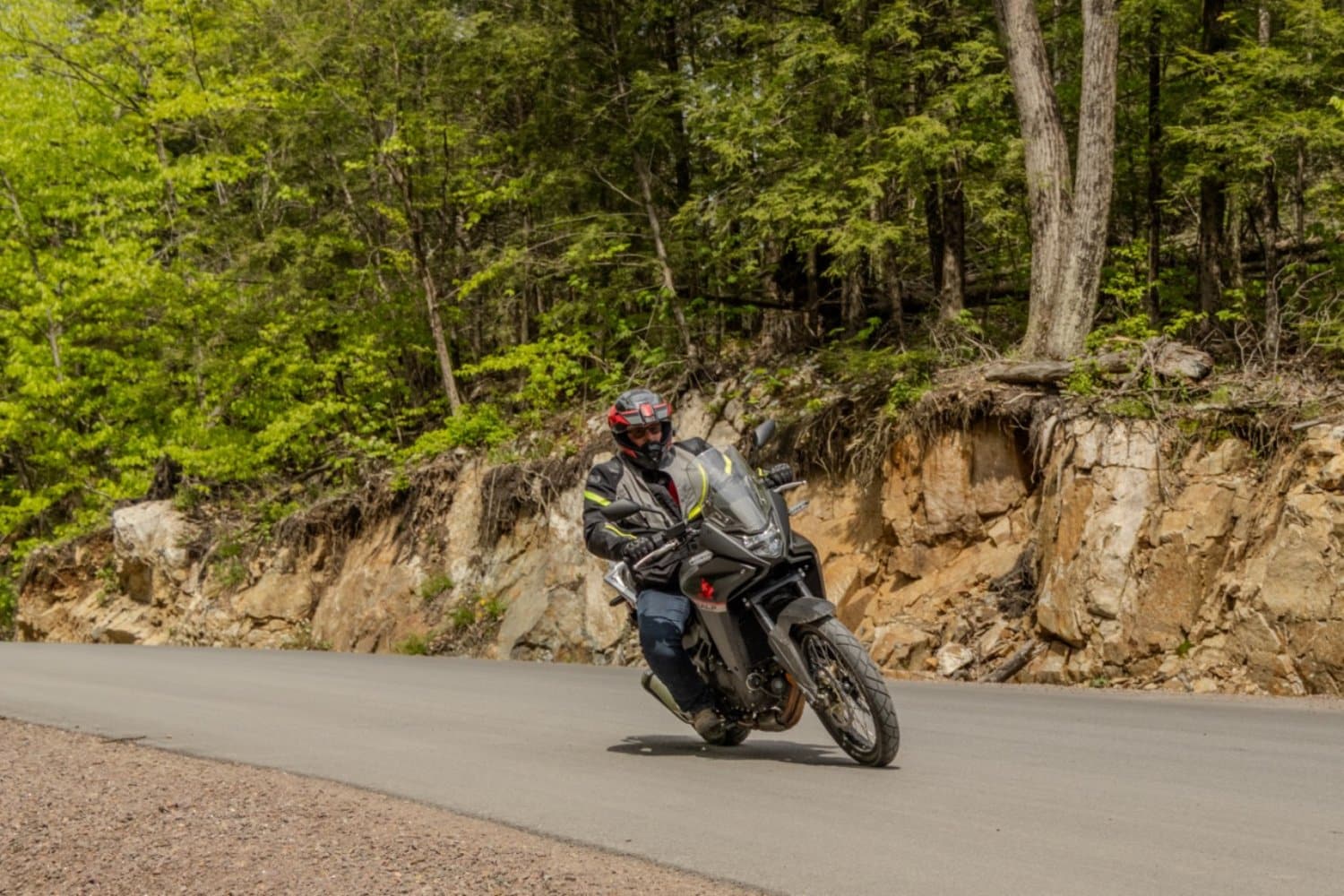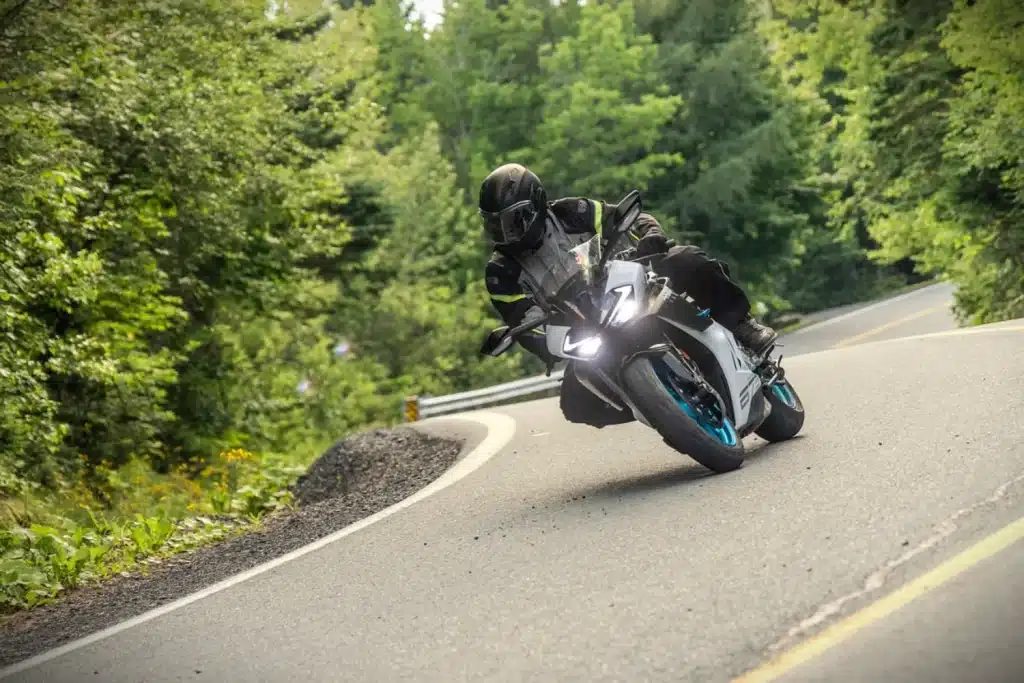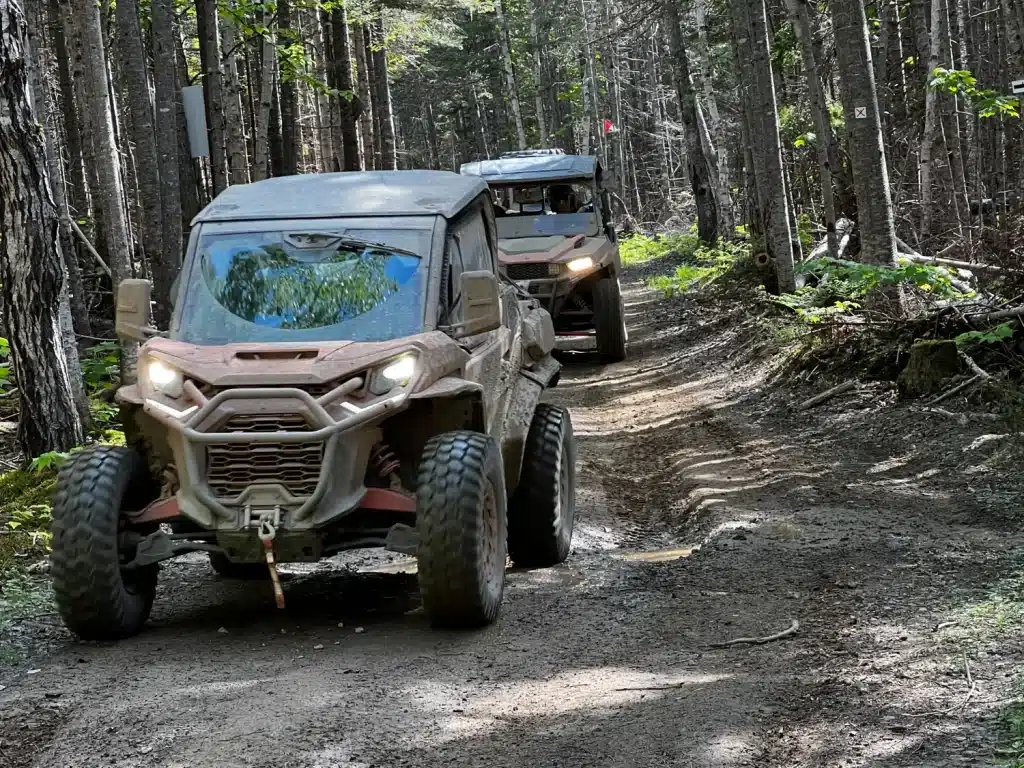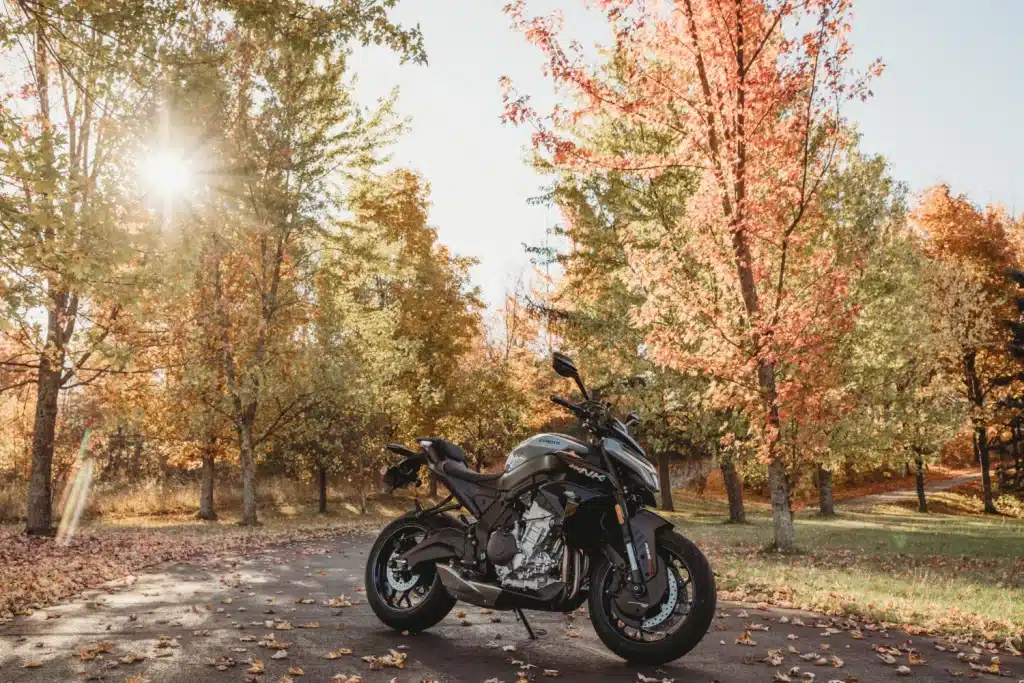The Honda Transalp made its very first appearance in Europe in 1986. It was an instant success, with perfect versatility for exploring all types of roads. Even light off-roading. It was not available in Canada until 1989, and then only for two years.
This model fills the increasingly popular niche of medium-displacement adventure motorcycles. In fact, these bikes now have powertrains capable of sustaining high speeds on the highway without problems. Ergonomic suspension and riding positions mean that the miles can be covered in acceptable comfort. What’s more, their smaller footprint and reduced weight make them easier to maneuver in serious off-road conditions than larger, one-liter machines.
Aware that demand for this niche was growing, Honda finally announced the official return of this flagship model to North America and introduced it to its range at the end of the 2023 season. The 4Riders Magazine team had the chance to ride the bike more seriously and also compare it with its rivals in a comparative test.
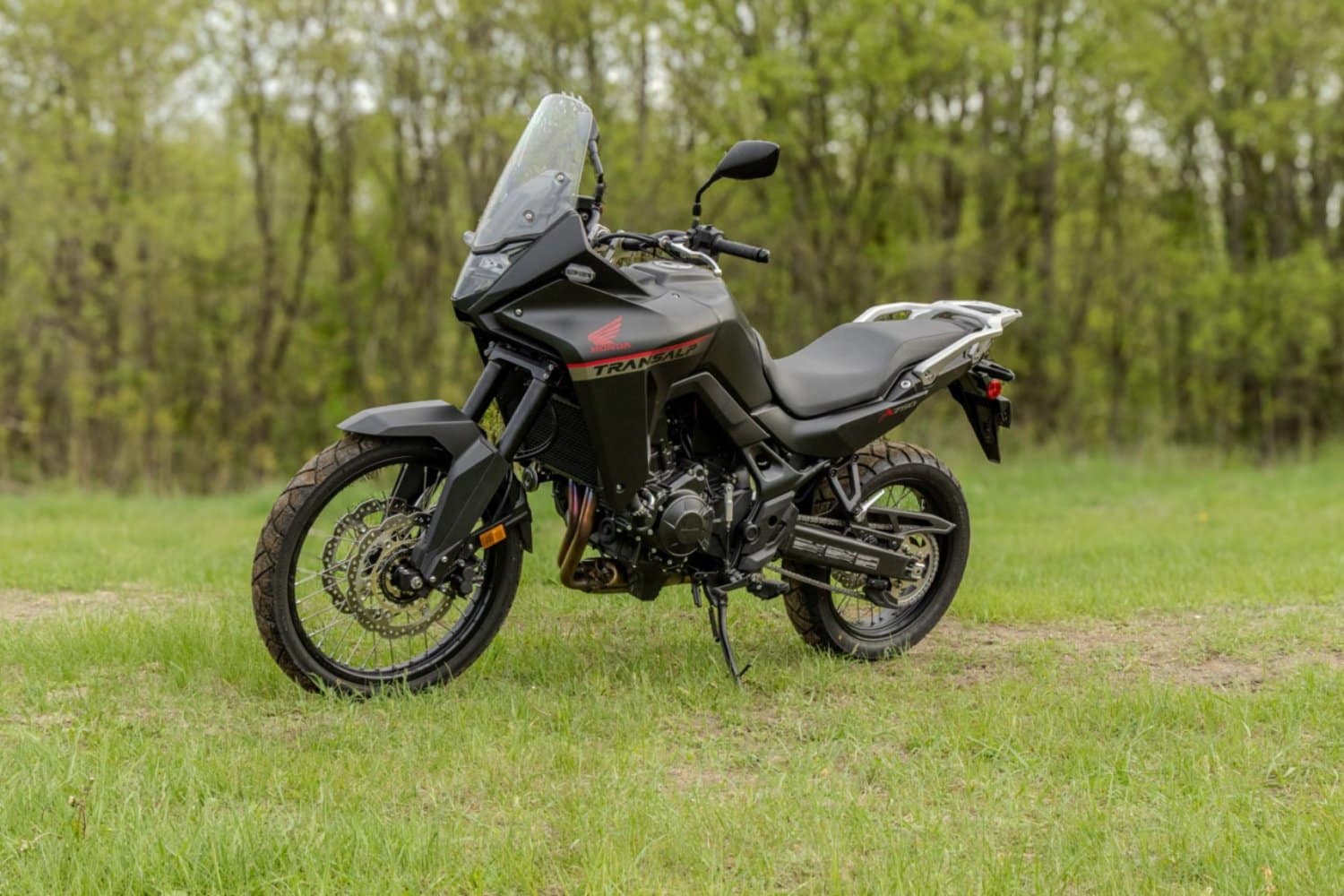
Rather consensual styling
Looking at the Honda Transalp 750 2024 from different angles, it’s clear that the Japanese manufacturer has opted for a streamlined aesthetic. With its understated design, the bike doesn’t particularly stand out from the crowd. One might even find it a little austere, especially with the single matte black color available. However, despite its rather sober styling, attention to detail is constant. Honda, renowned for the quality of its finishes, lives up to its reputation with the Transalp 750.
In terms of ergonomics, everything is well laid out and the handlebar controls are intuitive. Handling of the controls is very precise, whether it’s the clutch, gear selector, brakes or commodo buttons. However, it’s worth noting that the horn and indicators are reversed compared to most other brands.
The 5-inch TFT color display, positioned high up in the center of the bike, offers several configuration options. Thanks to a limited number of handlebar buttons, menu navigation is intuitive, except for traction control deactivation. The command to do this is buried deep in the menus, and we didn’t find it until the end of our test ride. Otherwise, while driving, it’s possible to test different driving modes.
Another noteworthy feature is the ease with which you can switch from sitting to standing, a crucial element for a true adventure bike.
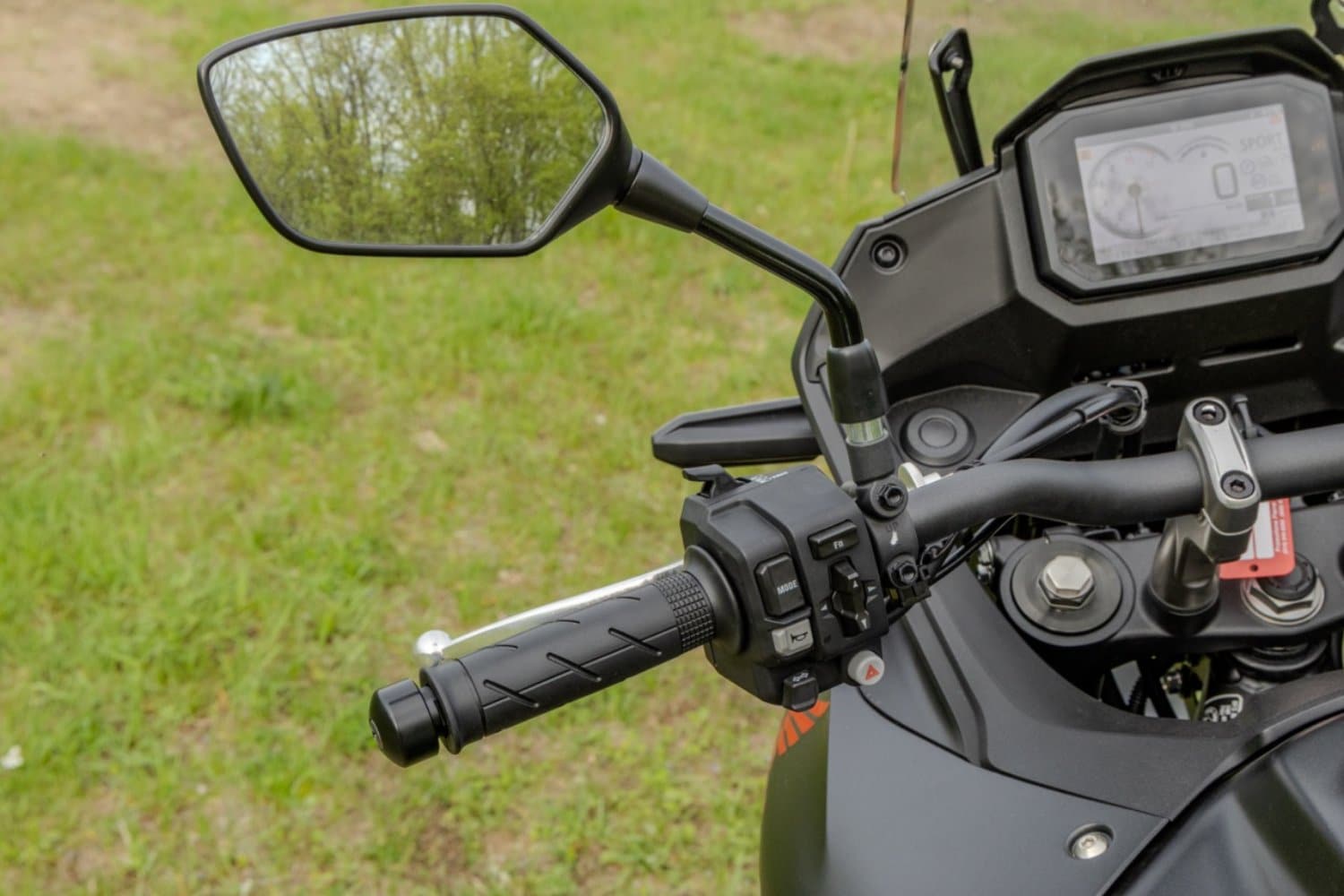
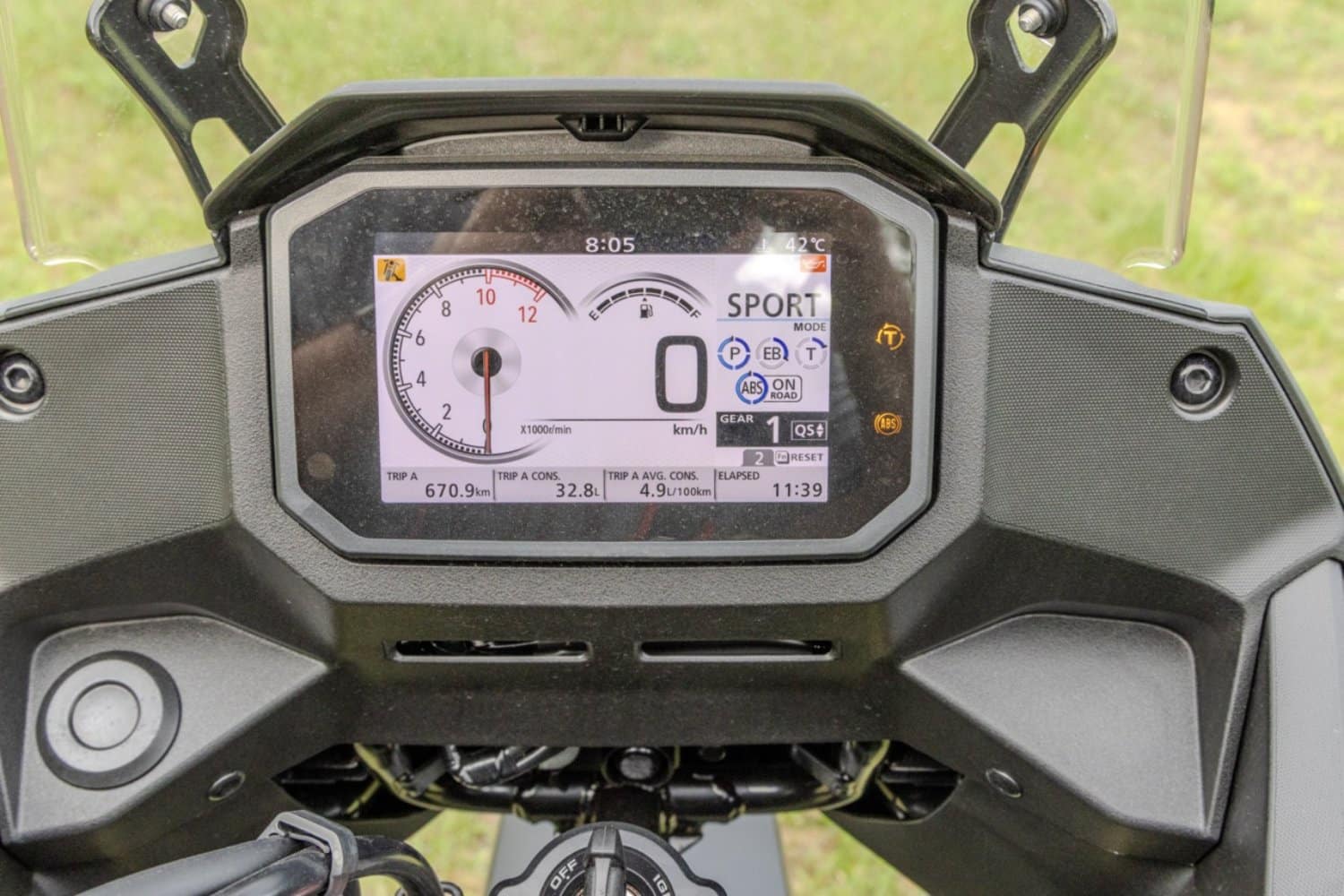
Motorization
At the heart of the Honda Transalp 750 2024 is its all-new twin-cylinder, single overhead camshaft engine. This engine, both highly compact and designed with the manufacturer’s latest technological innovations, offers remarkable throttle response and surprising smoothness, whatever the rpm. Vibration control is excellent, with no stray vibrations entering the running boards or handlebars.
In terms of technical specifications, the engine of the Honda Transalp 750 2024 has a displacement of 755 cm³. It delivers 92 horsepower and 55 lb-ft of torque, making it competitive in its segment. Thanks to an ingenious air intake system, the “vortex”, which creates a vortex, the motorization is very vigorous. Its sound becomes particularly exhilarating when the revs are pushed to attack consecutive curves. Torque is quickly available at low revs, and, as with twin-cylinder engines, remains present right up to the red line. In normal driving conditions, power is more discreet at low revs, but fully reveals itself around 4,000 rpm.
The Transalp is not available with DCT transmission, but is equipped with a quick-shifter. This mechanical device enables transmission gears to be changed without using the clutch, which is particularly advantageous for on-road driving. It promotes quicker acceleration and almost instantaneous gear changes on successive bends. In keeping with Honda’s reputation as a fine engine builder, the gearbox is a model of its kind in terms of smoothness and precision of operation. However, it is less useful for off-road driving.
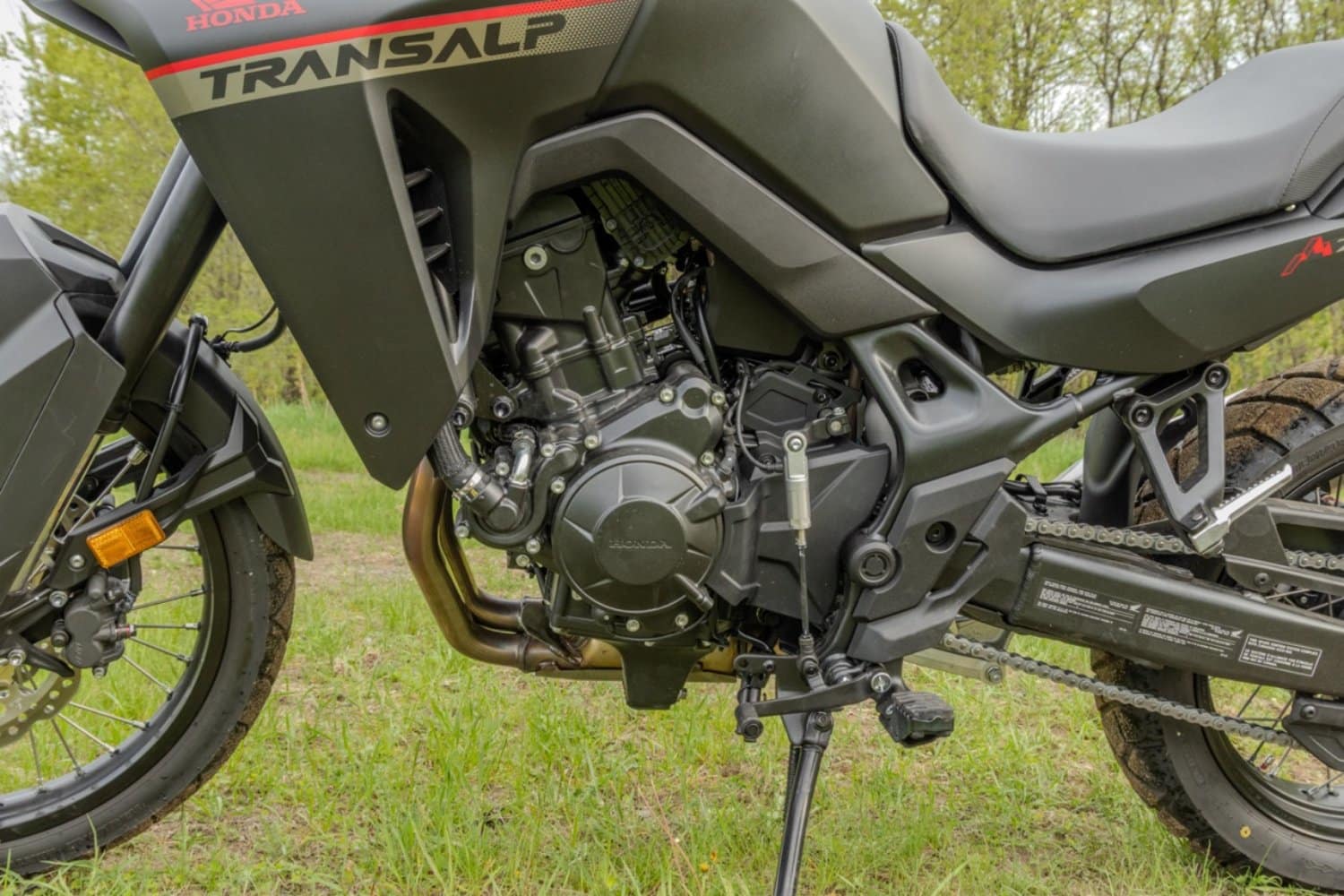
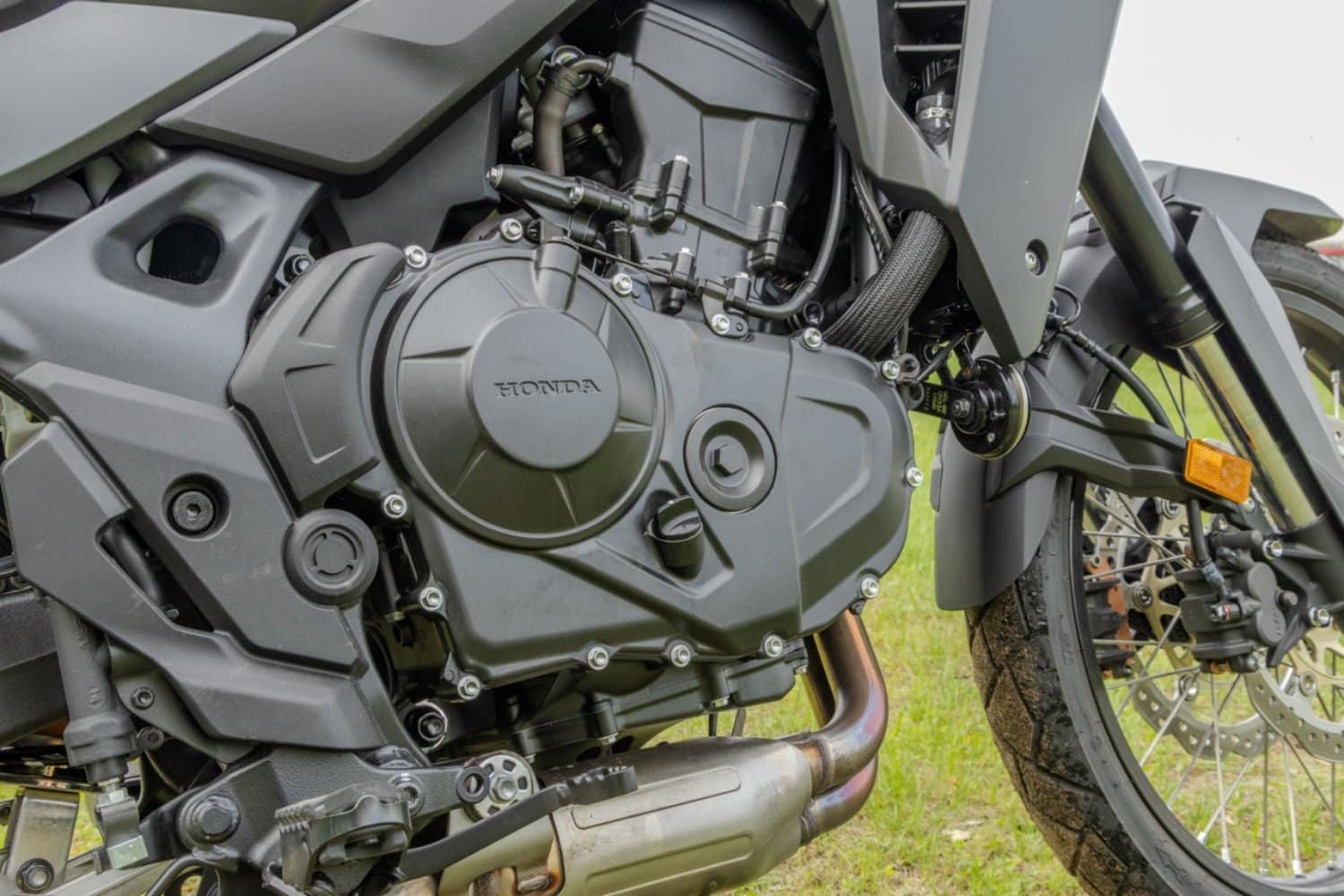
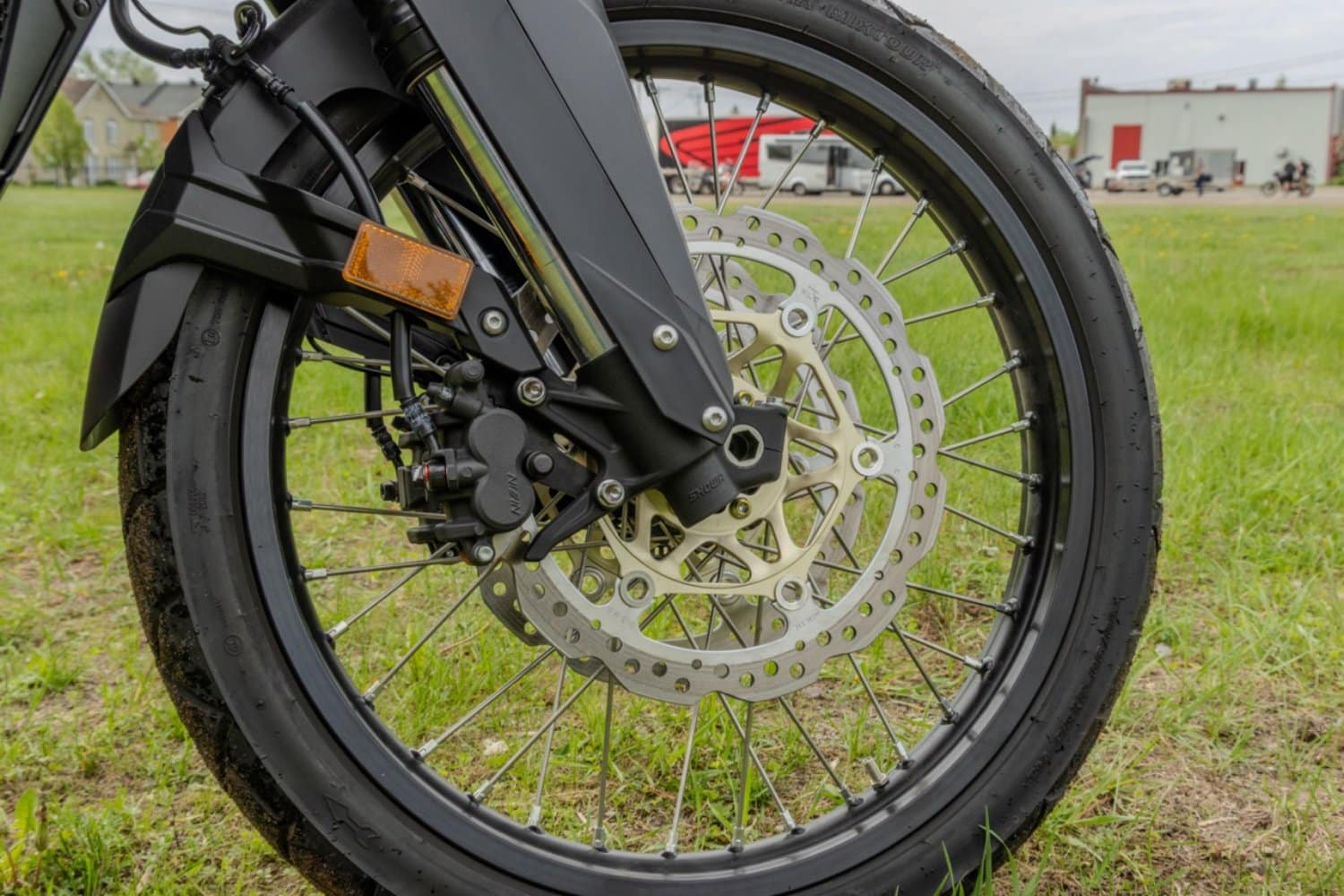
Suspension, brakes and tires
For generous yet comfortable damping, the Honda Transalp 2024 is equipped with Showa suspensions. At the front, it features a 43mm-diameter upside-down fork with 200mm (8″) of travel. The rear features a PRO-Link suspension with 190 mm travel. Together, these suspensions provide a ground clearance of 210 mm, which is particularly competitive in the adventure category.
As for braking, the bike is equipped with twin 310 mm front disc brakes and a single 256 mm rear disc. The standard ABS system offers two levels of adjustment: the rear ABS can be deactivated only in “USER” mode, for controlled rear-wheel skidding off-road.
As for tires and wheels, the adventure starts off on the right foot, with a 21-inch rim at the front and an 18-inch rim at the rear. However, the bike is fitted with Dunlop MixxTour tires that offer an approximate 70-80% split between on-road and off-road use. These tires provide excellent grip on asphalt, but their off-road performance is less convincing. However, they are surprisingly good at off-road driving, even if this is not their preferred domain with this current configuration.
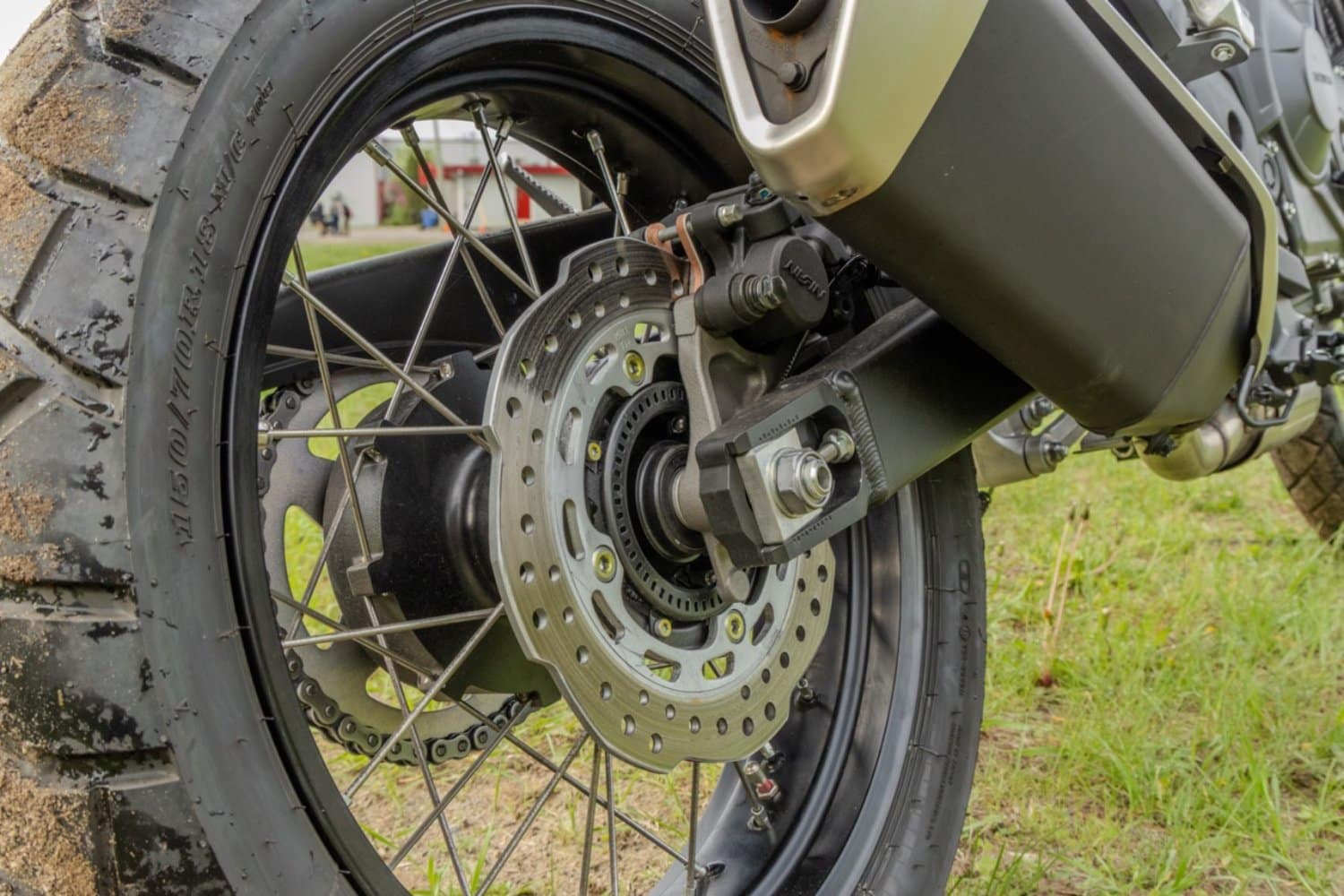
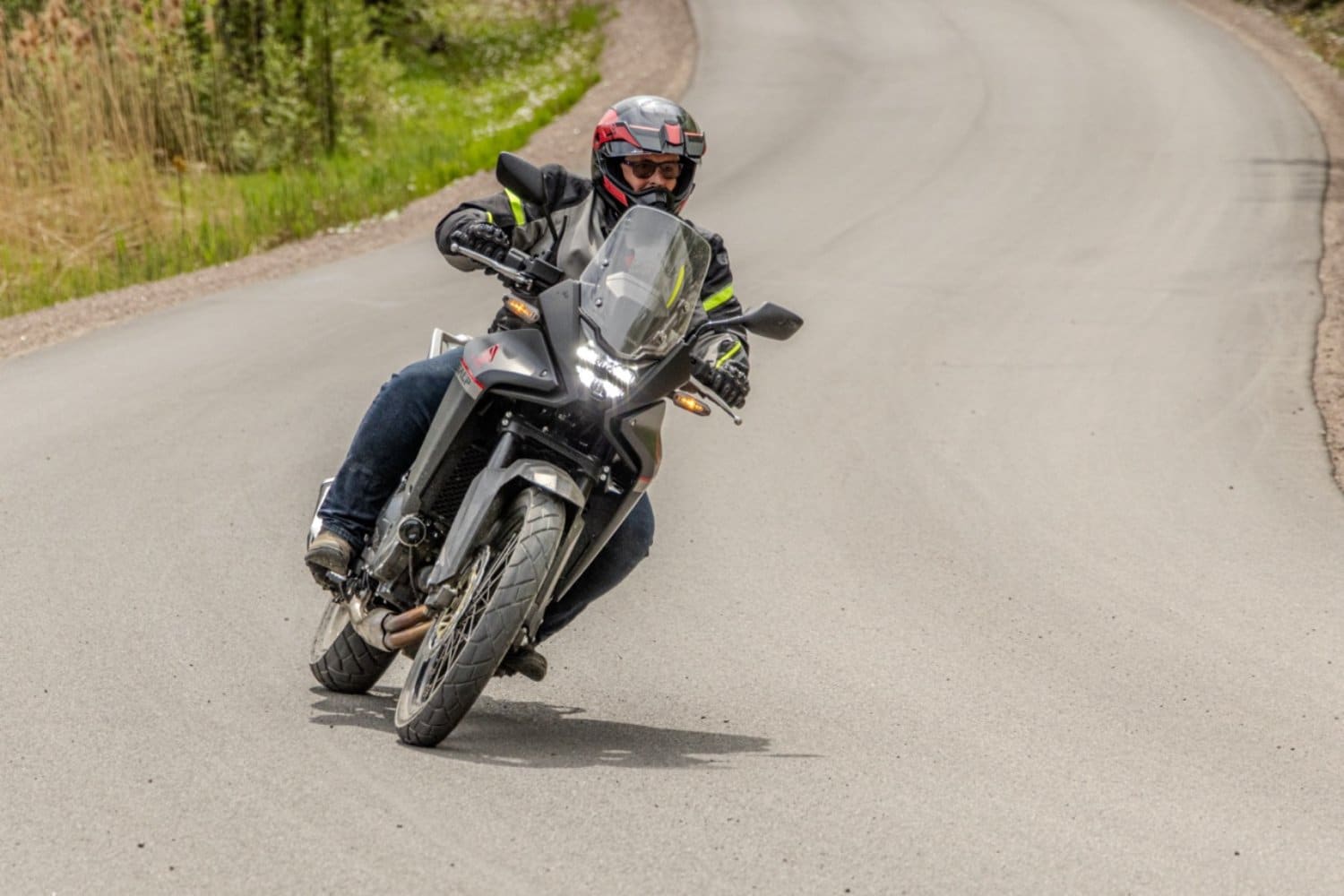
Sitting on the bike…
Straddling the bike, you immediately notice that balance is easy to maintain. After a few tries, you can effortlessly hold on for several seconds. This ease of balance is indicative of good handling at low speeds and in technical sections. What’s more, the seat proves comfortable for long days of riding. Its narrow shape between the legs also allows great freedom of movement for standing maneuvers. With a seat height of 855 mm, the bike is average, though slightly high for less experienced or shorter-legged riders. It should be noted that a 30 mm lower seat option is available to facilitate access for riders of varying heights.
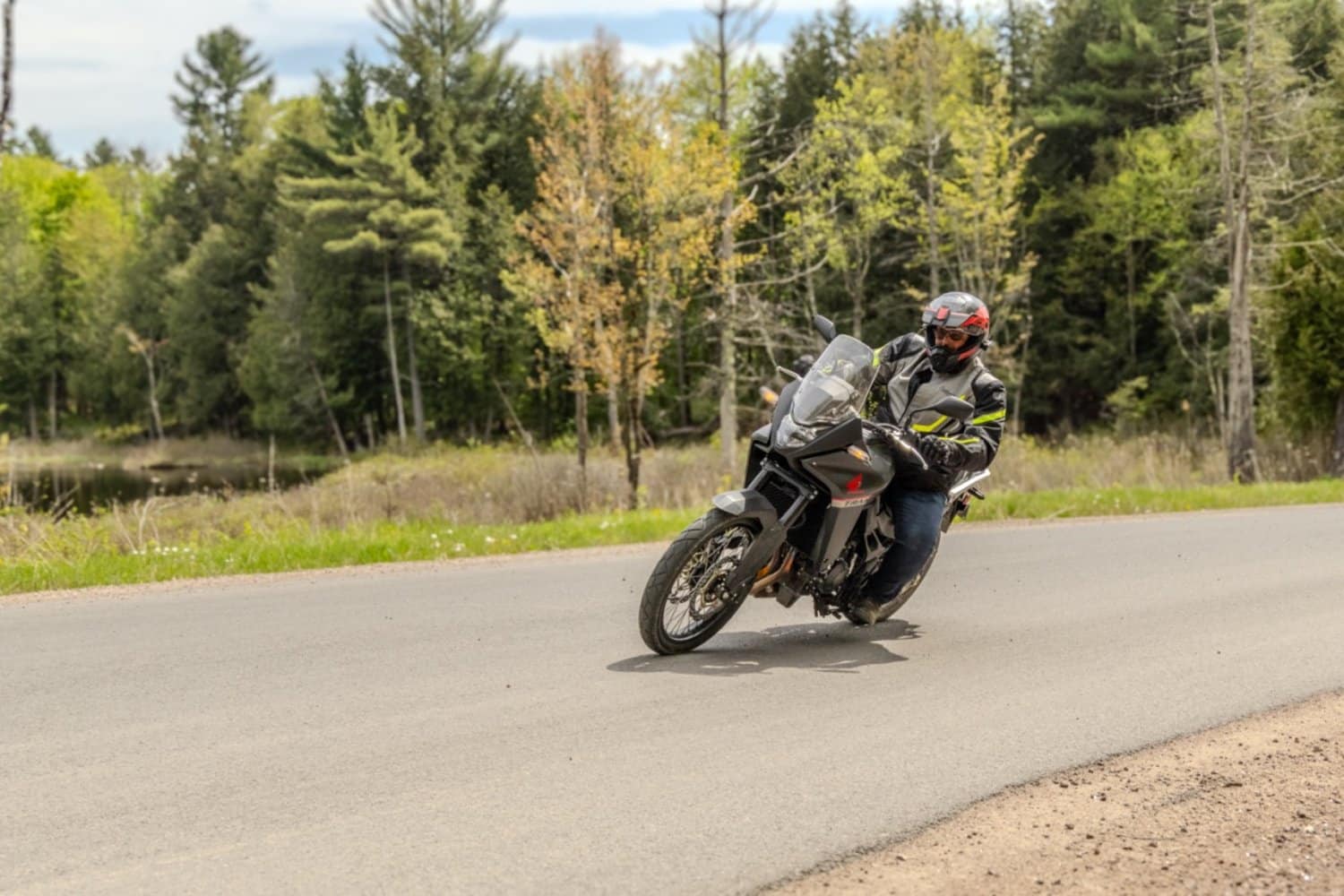
Road riding
It’s clear that the Honda Transalp 2024 is particularly designed for road touring. Its driving precision is remarkable, providing exceptional handling in this category. The powertrain is both smooth and responsive, offering a boost at just the right moment. The pleasure of shifting gears using the clutchless selector is undeniable. The precision of operation that makes full use of the available power puts a smile on our faces.
Kilometers are racked up quickly without fatigue, thanks to the suspension’s effective absorption of Quebec’s rough roads. What’s more, the upright, relaxed driving position minimizes the effort required. The Honda Transalp 750 is clearly at home on secondary roads.
Off-road riding
Now it’s time to leave the asphalt behind and assess the adventurous motorcycle credentials of this model. Off-road, the Honda Transalp 750 2024 proved surprisingly responsive, even on tires that aren’t the most aggressive. Bumps are absorbed thanks to the ample suspension travel, and the bike’s balance is excellent. Despite this, traction control is very intrusive, cutting off momentum in gravel, on hills or when the trail is slippery. This can get the rider into trouble in certain situations, and he or she would be well advised to switch off traction control.
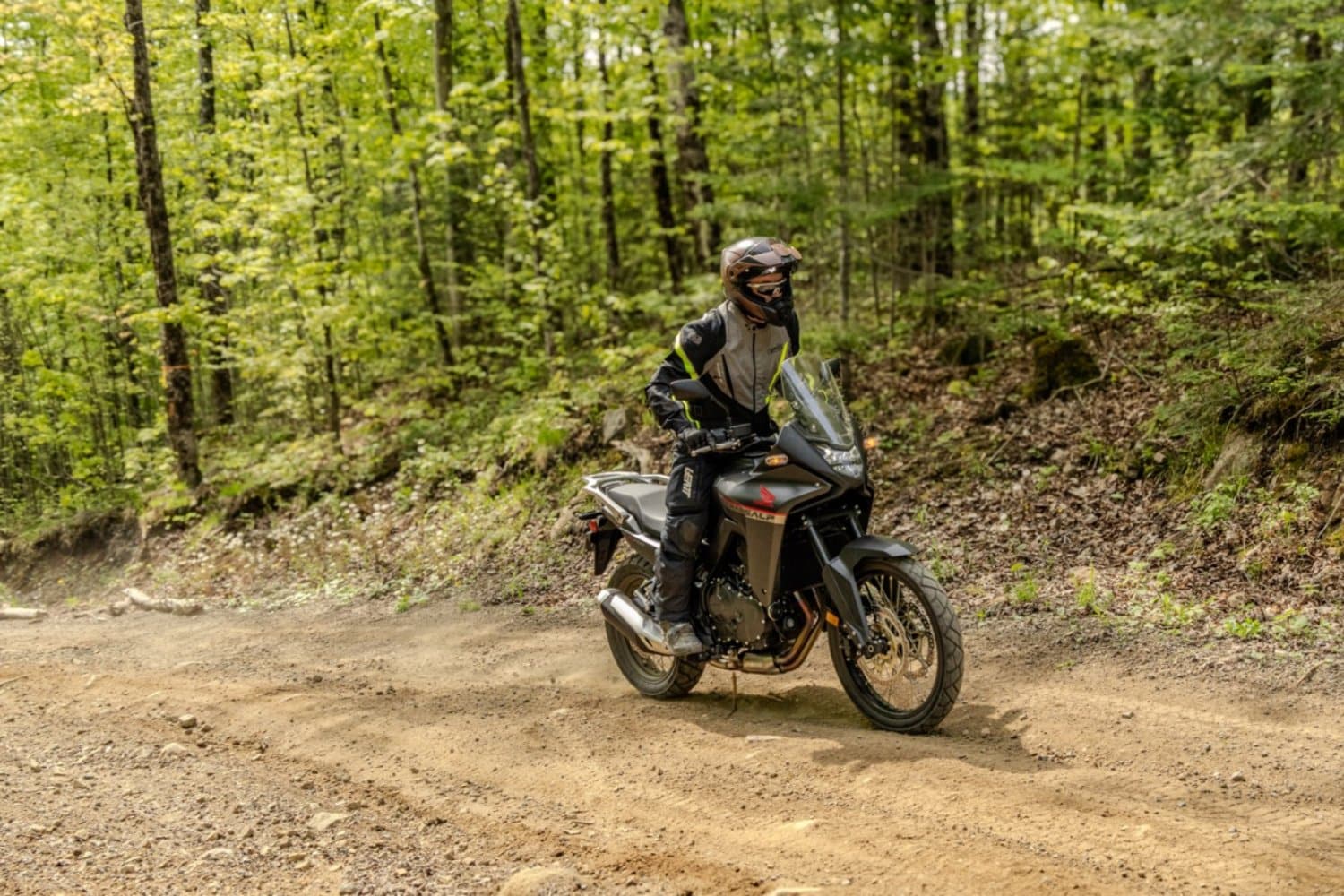
When it comes to off-road use, the motorcycle is completely unprotected. The exhaust manifolds, filter and crankcase are exposed to the impact of a rock strewn across the trail. You’ll need to equip the bike with protective parts if you want to use it more seriously in off-road mode. Honda offers a wide range of parts to equip the bike properly, such as tubular side guards, an engine shoe, mechanical protection plates, hand guards, etc.
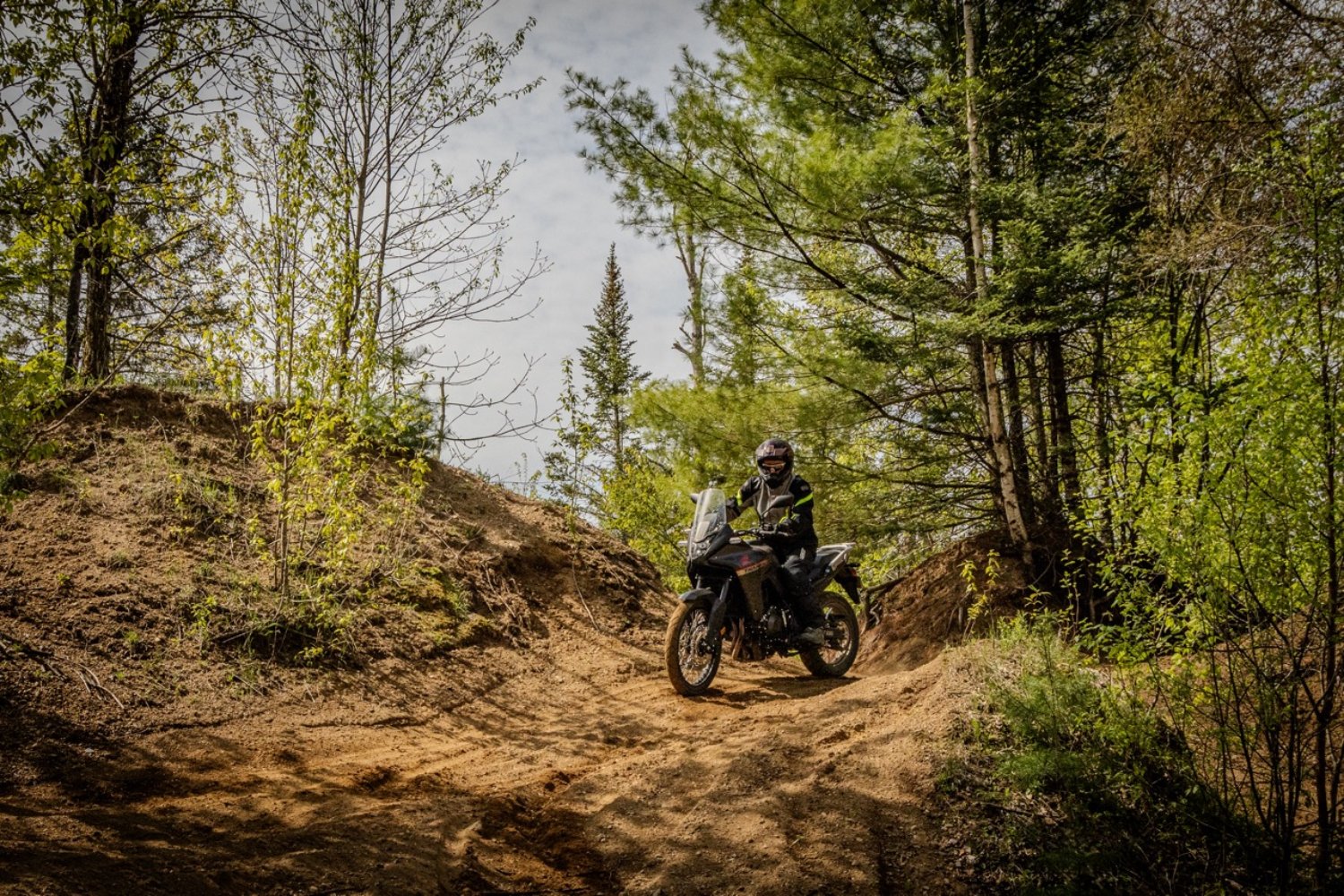
It’s fair to say that Honda has sought to offer its Transalp 750 at an attractive suggested retail price of $13,478. To achieve this price, the manufacturer had to restrict certain protective equipment. We hope that a more upmarket, well-equipped version will be available at a later date, like the Adventure Sport version of the Africa Twin.
Highlights
- All-new powertrain with low-end torque and low fuel consumption. Quick shifterfor on-road use.
- Feel-good rigidity and excellent chassis balance.
- Suspensions that provide good damping for big bumps without being a handicap on the road.
Areas for improvement
- The bike comes with very little protection. On the other hand, there are a number of protective accessories available as options.
- The traction control system is too intrusive, preventing controlled skidding. The menu for deactivating it should be simpler.
- The seat is designed in two distinct heights for driver and passenger. This second, higher position limits front-to-rear movement in off-road sections.
- A single color (matte black), while Europe is entitled to a gray and, above all, tricolored version that reminds us of the Transalp’s heritage. Perhaps for 2025…
Conclusion
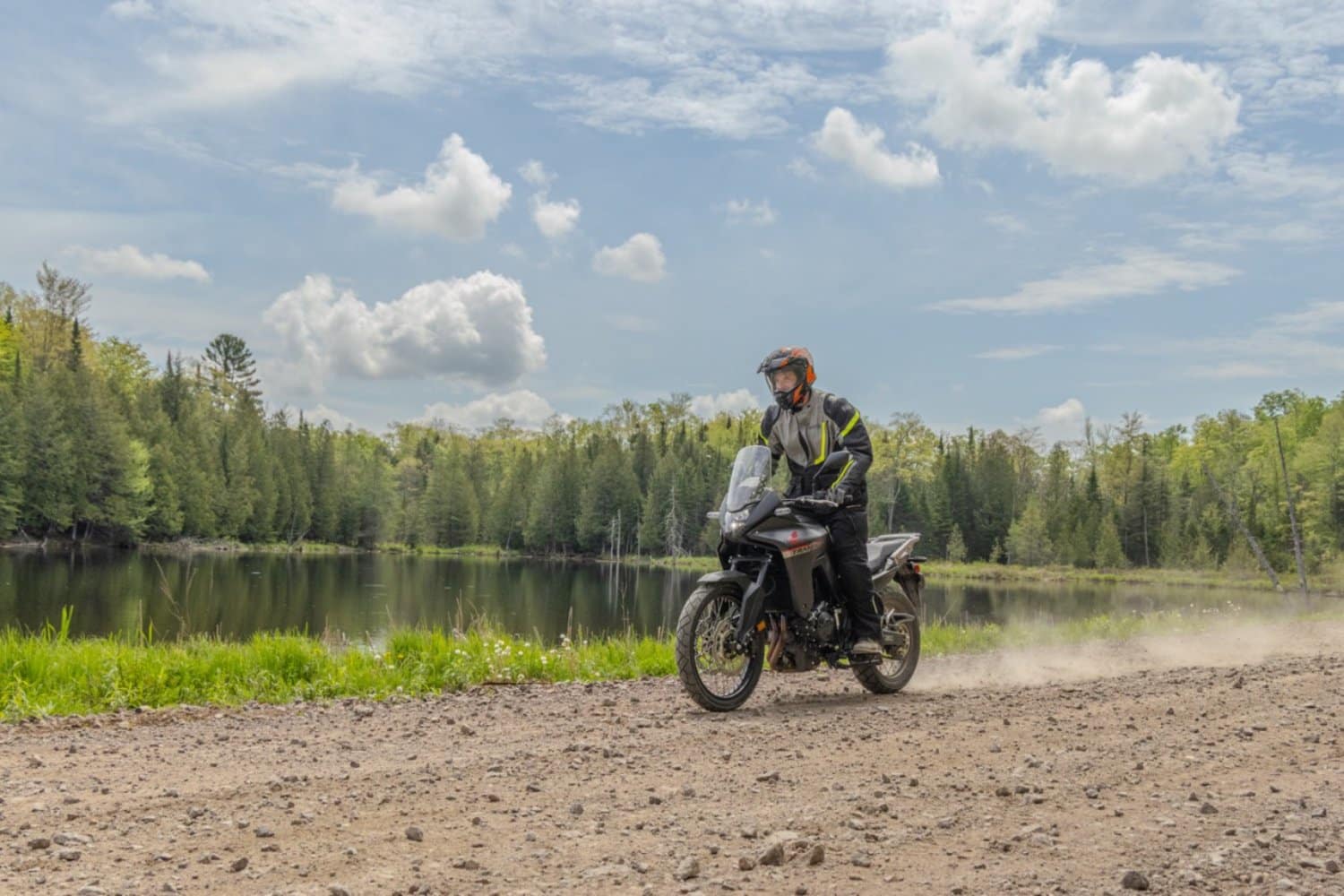
The all-new Honda Transalp 750 2024 is designed to offer a more civilized experience rather than pure adventure. With dynamic powertrains and adequate equipment, it is competitively priced in this demanding market. Its great versatility makes it equally at home on and off the road. It would be very interesting to see a future Adventure Sport version, similar to the Africa Twin, to meet the needs of off-road enthusiasts.
The 4 Riders magazine team warmly thanks Honda Canada for making this test ride possible.

